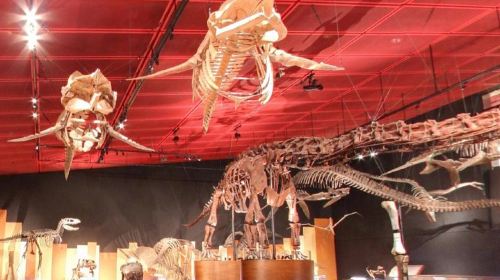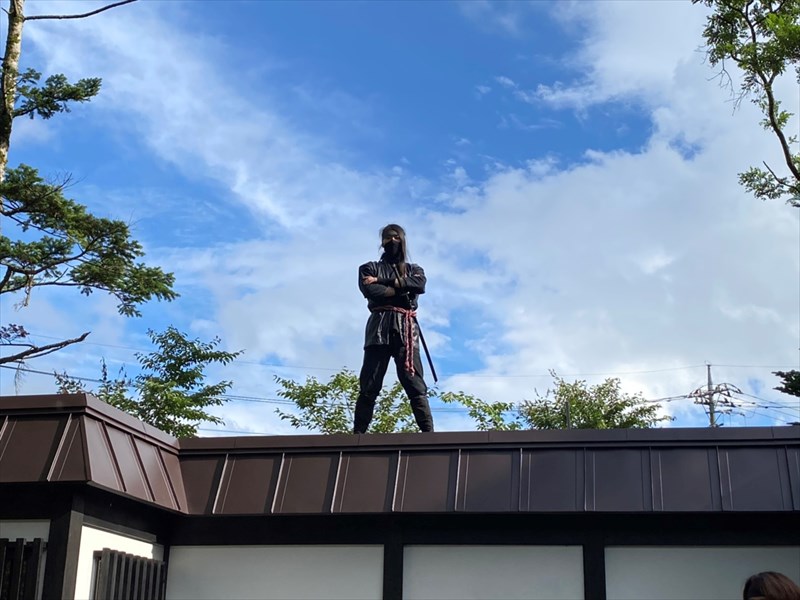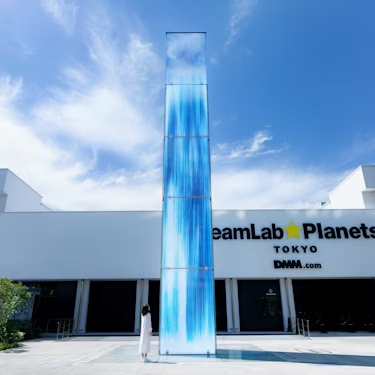More about: Tokyo Museum Tickets and Tours
Tokyo is a city that, despite being very modern, does not leave aside its traditional roots. Therefore, during your visit you will see traditional Buddhist temples, beautiful public gardens and numerous shrines. In addition, in the Japanese capital you will find the Tokyo National Museum, considered the largest and oldest museum in Japan, whose buildings house a collection of approximately 120,000 objects.
Without a doubt, buying tickets for this museum is a good option if you do not know what to see and do in Tokyo during your stay. You will enjoy an interesting general exhibition composed of 3,000 special objects. You will also have the opportunity to contemplate an exhibition that includes 648 objects recognized by UNESCO as Intangible Cultural Heritage of Humanity and 89 national treasures.
How much do tickets to the Tokyo National Museum cost?

General admission to the Tokyo National Museum costs 1000 yen or 8 €. The price of special tickets may vary according to the date and exhibition presented, as they are issued separately.
Either ticket is a good option to incorporate among the 10 things to see and do in Tokyo in winter, summer or any other season of the year.
How to buy tickets for the Tokyo National Museum?

General and special tickets to access the Tokyo National Museum are purchased directly on the day of the visit at the ticket office of the building.
However, you must first consult the calendar available on the museum's official website. There, you will find out which exhibitions and activities you can enjoy.
Regarding tickets for group tours, you will have to call +81-50-5541-8600 from your cell phone. You can also go to the museum's information office in Ueno Park, Taito-ku, Tokyo. You can then plan your visit.
Whichever ticket you choose, you will have to pay at the ticket office. The following methods of payment are available:
- Credit card: MasterCard, Visa, AMEX, Discover, JCB and Diners.
- UnionPay global payment card.
- E-cash cryptocurrency.
What types of tickets are there? Are there skip-the-line tickets to the Tokyo National Museum?

At the Tokyo National Museum they are aware that each of their visitors has different needs when touring the galleries. Therefore, you have different options when it comes to tickets.
Such is the case of general tickets (with access to the regular exhibition), special (whose sample may vary), group (from 20 people) and guided (in the company of a specialized person).
In addition, there are free tickets for:
- High school and elementary school students.
- Children under 18 years of age.
- Over 70 years old.
- People with any disability along with their caregiver.
Likewise, every year the museum allows free access to any visitor during some of Japan's public holidays:
- May 18(Museum Day).
- July 20 to 24 (Tokyo National Museum Commemorative Week).
- Third Monday in September (Keirō No Hi or Respect for the Elderly Day).
- November 3 (Bunka no hi or Culture Day).
These free tickets provide access only to the regular exhibition and, for this, the person must present at the museum entrance an identification: passport, driver's license, disability certificate, student card or medical insurance.
Are tickets to the Tokyo National Museum included in any Tokyo sightseeing pass?

Admission to the Tokyo National Museum is not included in any of the city's tourist passes, so you will not be able to enjoy the benefits of this type of card.
However, you have the possibility of hiring one of the best guided tours of Tokyo that incorporate a visit to the National Museum of the Japanese capital.
In this way, you can take a general tour in the company of a specialized guide, who, for approximately two hours, will briefly explain the exhibits.
Afterwards, you can enjoy other activities included in the tour. For example, visit Ueno Park, live a Samurai experience in Tokyo or explore the architecture of the city. It all depends on which tour you connect with.
Are there discounted tickets for the Tokyo National Museum?

Yes, the Tokyo National Museum offers discounted admission to university students who present their current ID. This way, you will get a special price of 500 yen or €4, i.e. 50% less than the general admission.
In addition, if you decide to visit the museum in a group, you will get a 10% discount. In this sense, groups of university students pay 400 yen or 3 €, while tickets for tourists or locals who choose this option, have a cost of 900 yen or 7 €.
Are there special tickets for children?

The Tokyo National Museum does not have special admission tickets for children. However, all children under the age of 18 are admitted free to the regular exhibitions offered throughout the year.
Undoubtedly, this is an activity that can not miss on your list of things to see and do in Tokyo with children, as the little ones will be able to learn about the cultural assets of the Japanese empire.
In the facilities they will be able to see a large number of works on display, which will allow them to discover the different periods of the Japanese dynasties.
Can tickets be purchased online or only at the ticket office?

Buying tickets online is often beneficial because you can select the day and time of your visit. Basically, it is a method that saves time at the ticket office, as you do not have to wait in a long line due to the influx of tourists.
This, however, is not possible in this case, since at the Tokyo National Museum tickets must be purchased directly at the ticket office on the day of the visit. However, you have to book a few days in advance, especially if it is a group tour.
Opening hours of the Tokyo National Museum

The Tokyo National Museum is open from Tuesday to Sunday from 9:30 a.m. to 5:00 p.m., with last admission at 4:30 p.m., i.e. 30 minutes before daily closing time.
It is important to take into consideration that the museum closes its doors every Monday, in order to maintain the exhibits. However, if that day is a public holiday in Japan, then the museum will be open to the public and closed the following day.
Likewise, you should know that the Tokyo National Museum has temporary closures and openings, which may vary according to the seasons of the year. Therefore, you should check this information beforehand.
How much time do you need to visit the Tokyo National Museum?

Determining the time to visit the Tokyo National Museum is a bit complicated, as each person has his or her own pace. In this sense, there will be people who need 30 minutes, an hour or even a full day.
Ideally, you should visit the museum with enough time to stop in front of each work and object. This way, you will be able to observe every detail and read the descriptions found next to the exhibits.
You will also enjoy the traditional architecture of the buildings that make up this museum complex, the wonderful natural environment of the gardens and, if possible, the special exhibitions.
However, if you do not have much time for the tour because you are only going to be in Tokyo for 3 days, more or less, I recommend visiting only Honkan, on the second floor of which is the "Gallery of Japan". This is a chronological exhibition that you can contemplate in a minimum time of 30 minutes.
Afterwards, you will be able to fulfill other activities of your itinerary, such as exploring the streets of the city, attending one of the gastronomic tours of Tokyo or joining a photo tour of the Japanese capital.
Best time to visit the National Museum of Tokyo

Certainly, the off-peak tourist season turns out to be the best time to visit Tokyo and its attractions.
In this sense, the city's National Museum is no exception, so you should try to take a tour during the less crowded days. This way, you will avoid long lines, you can stop in front of the works and walk through the halls without being surrounded by many people.
For this reason, it is important to know that the largest number of visitors to the Tokyo National Museum is from 12:00 to 15:00 hours. On the contrary, at 9:00, 10:00 and 16:00 hours, you will find little affluence, making it the ideal time for a quiet tour.
How to get to the Tokyo National Museum

The first thing you should know is that the Tokyo National Museum is located in the north of the city, specifically in the historic Ueno Park (13-9 Ueno kōen, Taitō-ku).
Such natural and cultural space is easily accessible for any tourist or local person, either by public transport (bus, subway, electric railroad), car or bicycle.
If you decide to use public transport in the city, you should know that a few meters from the museum is the stop of the JR bus station (Ueno and Uguisudani), Tokyo Metro (Ginza and Hibiya Line Ueno, Chiyoda Line Nezu) and the electric railroad (Keisei Railways Ueno).
However, if you prefer to drive yourself and you have already rented a car, you should go along street 1 and take the Ueno exit, to continue along the metropolitan highway.
If you decide to use the city's bicycle sharing service, you will have to cycle 25 minutes from the center of Tokyo, i.e. approximately 5.4 kilometers, following the bicycle lanes.
If you use either of these last two options to get around, please note that the Tokyo National Museum does not have a parking area. Therefore, you will have to use one of the parking lots in the surrounding area.
What you can't miss at the Tokyo National Museum

The mission of the Tokyo National Museum is to recover and conserve millenary collections of art, belonging to the different historical periods of Japan.
In addition, these works and items are carefully studied in order to provide visitors with accurate information about these relics, which are exhibited daily in the halls of the museum's six buildings.
The museum's collection is the largest in the entire Asian country and comprises a total of 120,000 cultural objects. However, these objects are not displayed in their entirety.
Periodically the galleries are renovated to prevent light and temperature changes from deteriorating the materials of such precious antiquities. In addition, many of them are used only in special exhibitions in the Heiseikan and Hyōkeikan buildings.
If you do not know what to see and do in Tokyo in 2 days or more of your stay, you will have to incorporate among your list of activities an obligatory visit to the National Museum of the city.
Division of the Tokyo National Museum
In the museum's facilities you will find regular exhibitions that are usually changed approximately every two months to preserve them, because the materials are very sensitive. There are also special exhibitions, held up to five times a year with samples from Japan and other countries of the world.
This museum complex is composed of six buildings:
- Honkan: this imperial style building was named Cultural Heritage and is the main building of the museum. Its rooms house a collection of Japanese art.
- Heiseikan: here you cannot miss the archaeology gallery on the first level and, on the top floor, a special exhibition hall.
- Hōryūji: the objects presented on the top floor of this building represent a donation made by the imperial family in 1878. You will see more than 300 treasures that were part of the Hōryūji temple in Nara. Also, on the first level you will find a restaurant.
- Kuroda: this is a memorial hall where you will have the opportunity to contemplate the oil paintings of Kuroda Seiki.
- Toyokan: in this gallery you will enjoy an extensive exhibition of oriental art.
- Hyōkeikan: this is another of the halls of the museum that has been declared Important Cultural Heritage, due to its architectural style from the end of the Meiji era (1909). This ancient building is open only for special exhibitions.
The tulip tree
In addition to this tour, you can marvel at the imposing tulip tree planted in front of the main building (Honkan).
This natural monument is approximately 120 years old and is considered a symbol of the National Museum. You can see its beautiful yellow flowers if you visit Tokyo in summer, as the tree blooms splendidly throughout the month of June.
Tips for visiting the Tokyo National Museum

Pay attention to these basic tips for visiting the Tokyo National Museum:
- Decide which exhibit you are most interested in by consulting gallery information beforehand.
- For group visits, you should contact the museum to reserve tickets.
- You should not visit the museum with suitcases or large bags, as there is no storage area for these items.
- If you are traveling by car or bicycle, keep in mind that the museum does not have a parking lot.
- Plan your visit with enough time to visit each gallery thoroughly and enjoy the natural surroundings of this museum complex.
- Consult the museum's calendar of activities. Keep in mind that although the museum is usually closed on Mondays, if this day is a public holiday in Japan, then the doors will be open and the next day (Tuesday) it will be closed.
- Visit the museum during the summer to enjoy the splendor of the imposing tulip tree and other green areas.




















